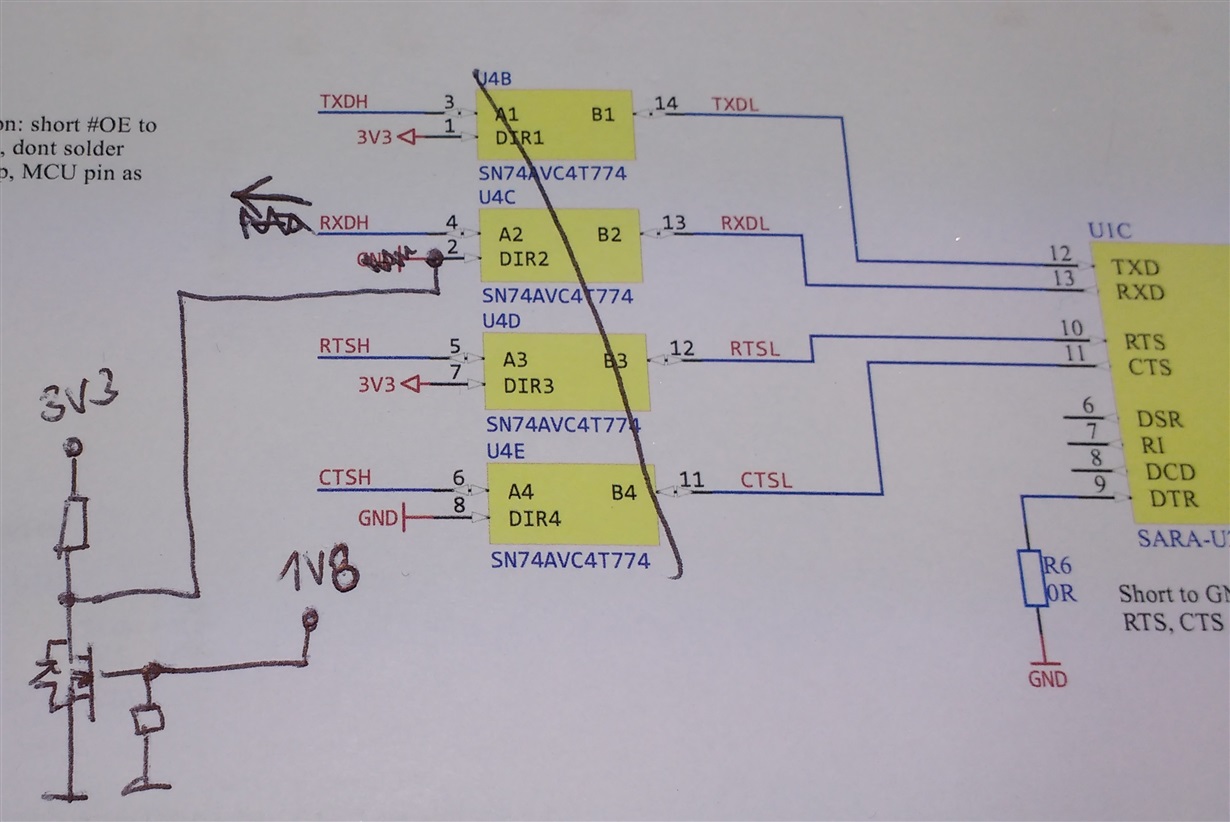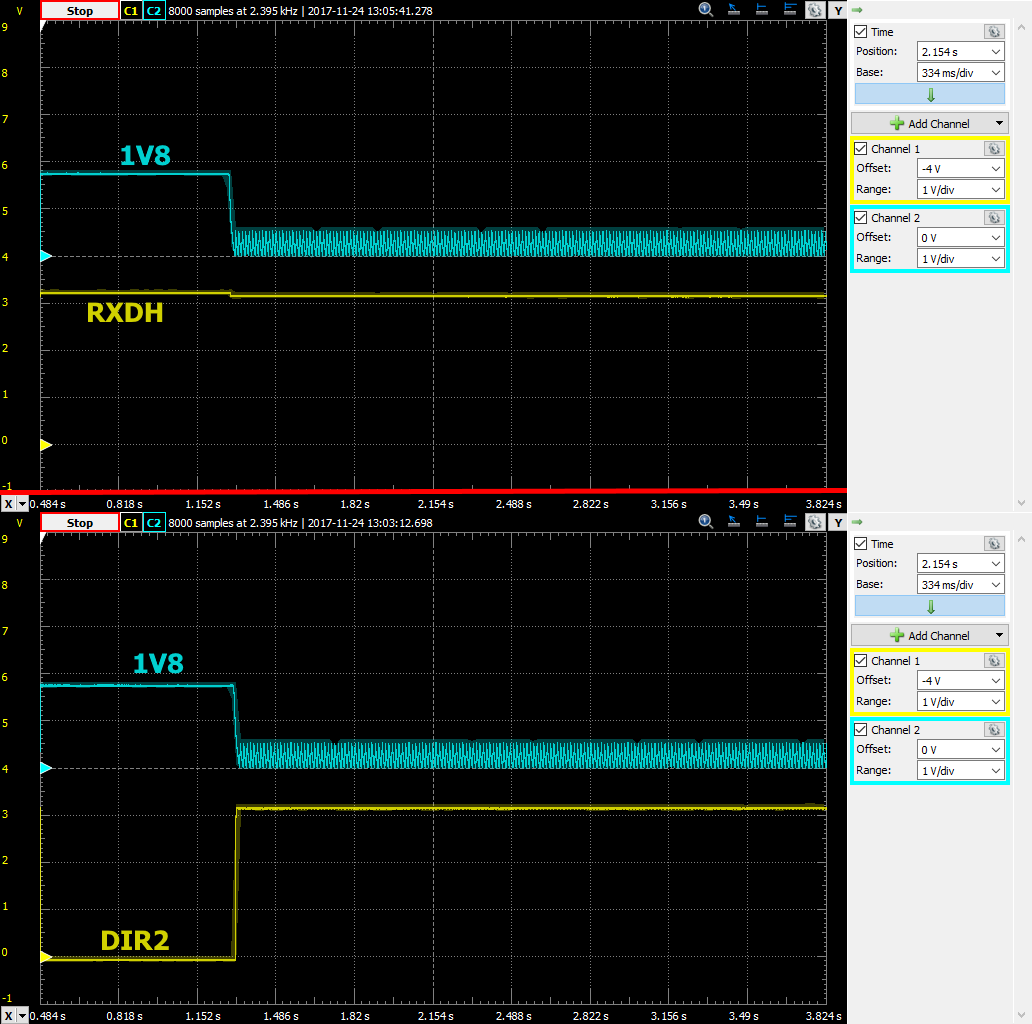Hello there,
I am having a problem with an application that uses the SN74AVC4T774 chip. Here is a schematic containing this part:
The device is used for IO level shifting between main MCU (3.3 V) and GSM module (1.8 V). My question is:
Please look at the schematic labels. What will happen to pins RXDH and CTSH (so side A outputs, side B inputs) after on part U1C the RXDL and CTSL become high impedance and the 1V8 voltage is cut-off? Because at the moment, for this situation I am getting some unspecified behavior on the RXDH line. Here is an oscillogram:
The yellow line shows the RXDH state after RXDL and 1V8 go high impedance. In case of 1.8V blackout, shouldnt the side A output pins go high impedance as well? I would appreciate all help regarding this.






